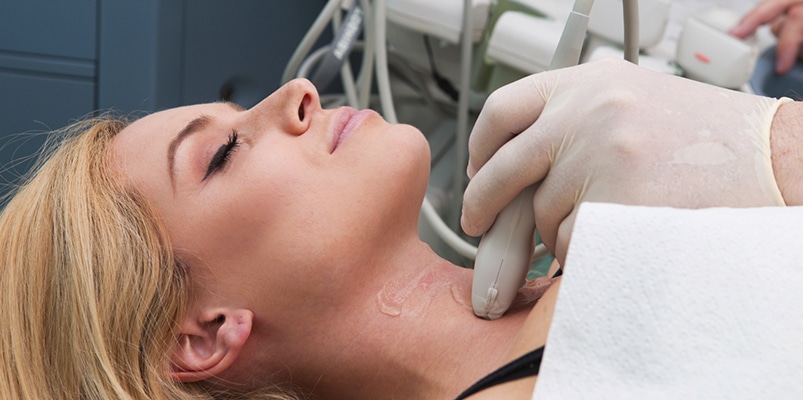Head & Neck Surgery in Austin, TX

Common Head & Neck Problems
As board-certified Otolaryngologists, Dr. Slaughter and Dr. Salvador went through a vigorous 5-year specialty training in head and neck surgery and have many years of experience in these complex surgical procedures. They have pioneered the development of minimally invasive techniques that allow many of these procedures to be done as an outpatient surgery with greatly reduced downtime.
Thyroid/Parathyroid tumors
Our physicians have developed minimally invasive thyroidectomy techniques that allow for procedures to be done as outpatient surgery. OUnlike the traditional large-incision approach requiring hospitalization, this method uses a small incision, requires no drain or dressing, and typically eliminates the need for hospital admission. Most patients do not require pain medicine after the first day and are back to normal activity in a week. Most patients do not require any pain medicine after the first day and are back to normal activity in a week. Thyroid goiter, nodules, and cancer can all be treated with this technique.
Parathyroid tumors are also treated with a tiny incision after using sophisticated localization imaging. These small tumors that create elevated calcium levels can typically be removed in a quick procedure with a resumption of normal activity in one day.
Thyroglossal duct cyst and branchial cleft cysts
Thyroglossal Duct Cyst is a benign cyst in the upper central neck that can rapidly expand and become infected. It arises from remnants of the thyroid during embryologic development. The understanding of this development is critical when removing this cyst to prevent a recurrence. Our physicians have extensive experience in the removal of this congenital cyst.
Branchial cleft cysts can present as cysts in the neck with occasional draining pores. They frequently become infected and tender with rapid enlargement. These cysts develop as part of a complex embryological development. Our physicians understand the detailed anatomy and development of these cysts and can offer safe removal as an outpatient surgery.
Salivary Gland Tumors
The face and neck contain the parotid and submandibular salivary glands. These glands can develop benign and malignant tumors including:
- Pleomorphic adenoma
- Warthin’s tumor
- Acinic cell carcinoma
These tumors arise surrounded by very important nerves in the facial area, and a detailed understanding of the anatomy and experience is critical to their removal. Our physicians have extensive experience to safely remove these tumors as an outpatient procedure.
Enlarged Lymph Node (Lymphadenopathy)
Lymph nodes can become enlarged in kids and adults. It’s very important to differentiate between a benign reactive lymph node enlargement, primary cancers such as lymphoma, and metastatic cancers that can appear in the lymph nodes. Fine Needle Aspiration is used to obtain a better understanding before any surgery. Surgical removal of the enlarged lymph node is a simple outpatient procedure with a small incision.
Mouth Cancer (Squamous Cell Carcinoma)
Squamous Cell Carcinoma is the most common form of upper respiratory cancer. It can start anywhere in the nasal cavity, oral cavity, throat, voice box, and upper esophagus. Our physicians can perform a fiberoptic video endoscopy to identify any possible cancer. A biopsy can be performed in the operating room safely to obtain definitive answers. Our physicians are experts in the complex surgical procedures to successfully remove squamous carcinoma from the head and neck area. He also works closely with the medical oncologists, radiation therapists, nutritionists, speech pathologists, and the patient’s family as a team effort to attack this disease for the best outcomes
Skin cancer
The face and neck are highly prone to skin cancers due to sun exposure. Our physicians have extensive experience in both removal and complex reconstructive procedures to restore function and appearance after cancer removal.
Vocal Center
Our physicians are experts in Laryngology (treatment of the diseases of the vocal cords). A tiny fiber-optic scope gives our physicians a clear view of the patient’s vocal folds while in motion. Many non-surgical therapies are effective in treating these conditions. Our Allergy Testing and Treatment Center provides enhanced allergy therapies to relieve vocal issues. Reflux therapy, Botox for spasmodic dysphonia, and speech therapy are also very effective to assist with these conditions. Minimally invasive procedures can also be successful, such as endoscopic removal of vocal cord polyps and nodules.
Schedule a consultation
If you would like more information about head or neck surgery, call or securely text us at 512.601.0303 to schedule a consultation at our office in Austin, TX.

